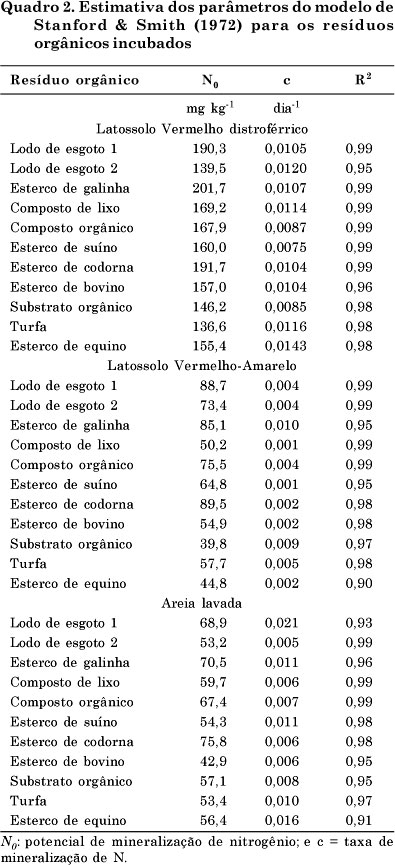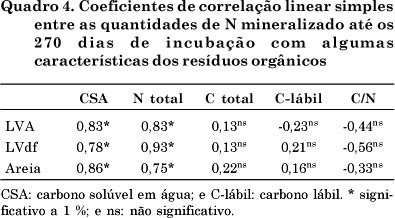The N mineralization rate varies from one organic residue to another, and depends on the chemical composition of a residue and its interaction with the soil. This study assessed the dynamics of N mineralization of organic residues incubated in Oxisols. The experiment was carried out from July 2007 to April 2008. Samples of manures, sludges, composts, peat, and substrate were incubated in washed sand, in a Red Yellow Latosol (RYL), and in a Red Latosol (RL), with 240 and 670 g kg-1 of clay, respectively. Mineralized N was assessed by measuring the contents of N-NH4+ and N-NO3- in leachates (after 15, 30, 45, 60, 75, 90, 120, 150, 180, 210, 240, and 270 days of incubation). N mineralization occurs at higher rates in the initial periods of incubation and the mineralized N (33 - 199.2 mg kg-1) after 270 days is regulated by the total N and water-soluble carbon contents in organic residue. Regardless of the medium used for incubation, chicken and quail manures resulted in the highest levels of mineralized N in both Oxisols. Aside from quail and chicken manures, the other fertilizers resulted in net immobilization of N in the RYL; all organic residues studied resulted in net N mineralization in the RL. Nitrate is the main N form released by the organic residues; the proportion N-nitrate/N-ammonium depends on the soil-residue mixture.
Mineral N; organic matter; immobilization; nitrification; humification degree







